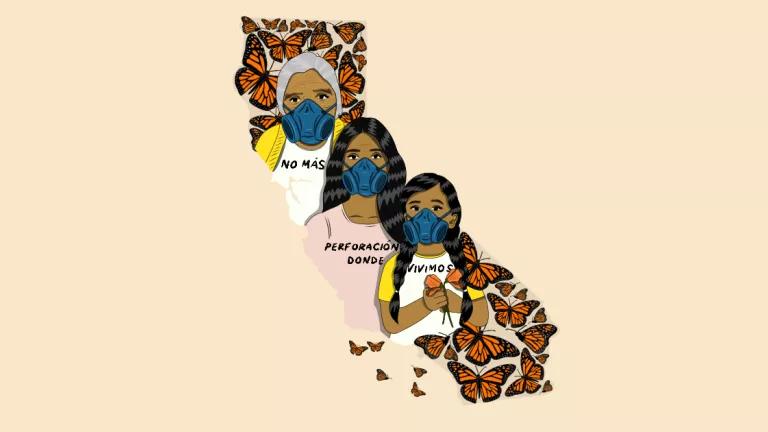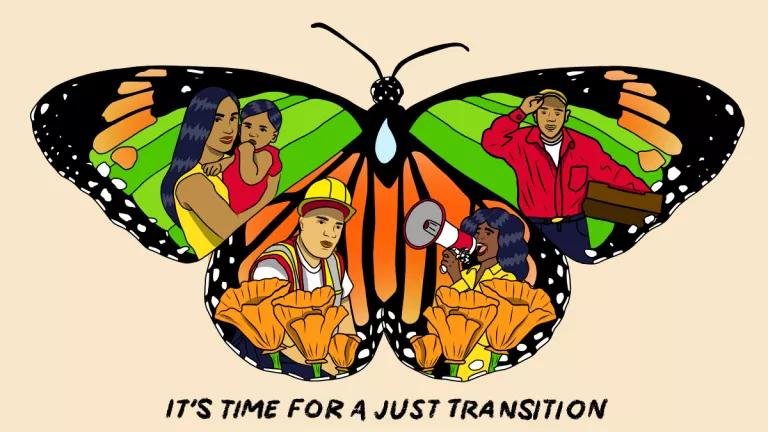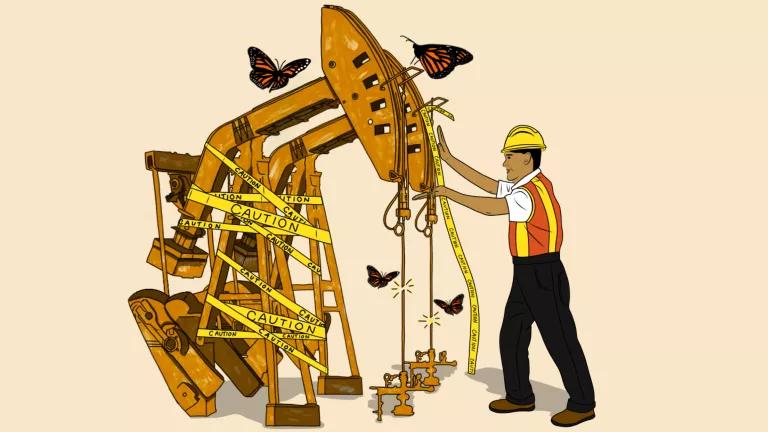Six Ways to Help End Neighborhood Oil Drilling in California
Thanks to a new rule under consideration, now is the time for Californians to make themselves heard on this issue.

Artwork by California-based artist Smug Morenita
Right now, millions of Californians live in neighborhoods within one mile of an active, polluting oil or gas well. A key reason: There are no statewide regulations keeping oil and gas wells away from the places where people live, work, and study.
The effects have already been devastating, particularly to people in low-income communities and communities of color. They face a variety of increased health risks, from asthma to premature birth to cancer. Nearby drilling also threatens them with the possibility of oil spills and exacerbates climate change.
Thankfully, California Governor Gavin Newsom recently proposed a rule that would require a 3,200-foot setback buffer between new oil wells and people’s homes, offices, and schools. It would also help limit the impact of existing drilling on communities. Here’s how you can help support the rule, which is currently open for public comment.
1. Submit a written comment.
Public comments can go a long way toward influencing decision makers—so this is your chance to play a role in our democracy. Tell California officials they must protect communities from dangerous neighborhood drilling. If you’re directly impacted by it, explain how; providing a personal story paints a picture of what’s truly at stake.
2. Get a quick primer.
Need more context? Read this NRDC blog describing the history of this fight—including the lobbying efforts of the oil industry to stop the setbacks and the scientific evidence linking drilling to increased risk of respiratory harm and poor birth outcomes. Then learn about community activists like VISIÓN, STAND-L.A., and other grassroots groups working to keep drilling away from their neighborhoods and address underlying environmental racism.
3. Share your story.
Record a video or take a selfie to let California leaders know why you care about putting an end to neighborhood drilling. Use our new share-your-story tool to upload your message to social and be sure to tag @NRDC in your post.
4. Pitch the press.
Write a letter to the editor of your paper to help keep this issue in the public eye. And remember, every letter published in California newspapers, big and small, has the potential to reach a broad audience.
5. Test your knowledge.
Ready to show your expertise on oil drilling in California? Text CA DRILLING to 21333* now to take a quick quiz. The more you know, the more effective your advocacy becomes.
6. Lean into the power of art.
Download and share the beautiful graphic (featured above) from California artist Smug Morenita on your social pages to raise awareness.

In English, sized for: Facebook | Instagram | Poster | Poster (PDF)
En español, sized for: Facebook | Instagram | Poster | Poster (PDF)

In English, sized for: Facebook | Instagram | Poster | Poster (PDF)
En español, sized for: Facebook | Instagram | Poster | Poster (PDF)

In English, sized for: Facebook | Instagram | Poster | Poster (PDF)
En español, sized for: Facebook | Instagram | Poster | Poster (PDF)
*By texting CA DRILLING to 21333 you agree to receive recurring urgent texts from NRDC to your cell phone from 21333. Recurring messages; message and data rates may apply; text STOP to quit anytime, or HELP for more info. Read our privacy policy.
This NRDC.org story is available for online republication by news media outlets or nonprofits under these conditions: The writer(s) must be credited with a byline; you must note prominently that the story was originally published by NRDC.org and link to the original; the story cannot be edited (beyond simple things such as grammar); you can’t resell the story in any form or grant republishing rights to other outlets; you can’t republish our material wholesale or automatically—you need to select stories individually; you can’t republish the photos or graphics on our site without specific permission; you should drop us a note to let us know when you’ve used one of our stories.

The Particulars of PM 2.5
Air Quality Is Worsening for Half of the World’s People
Clean Air Warrior